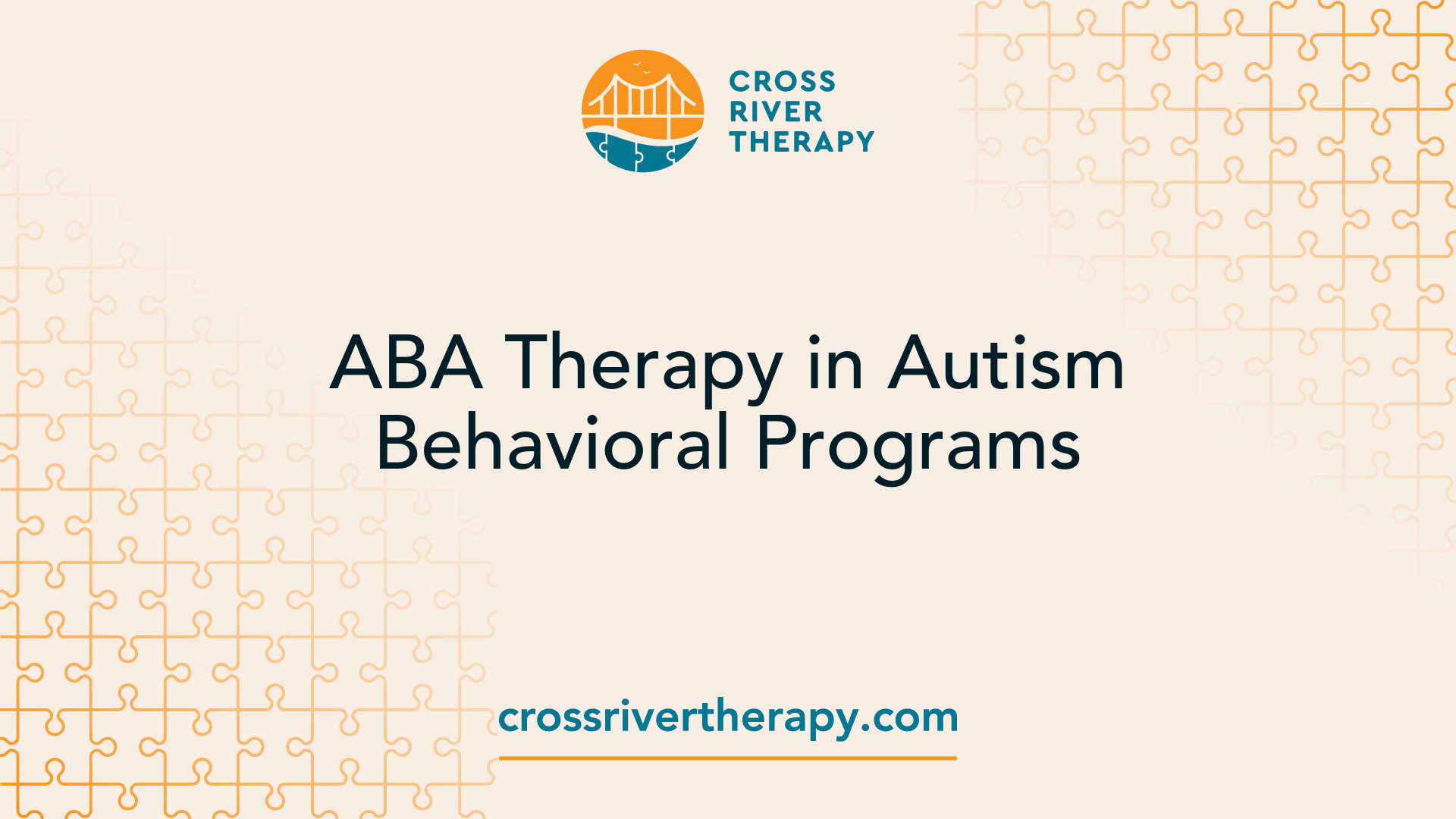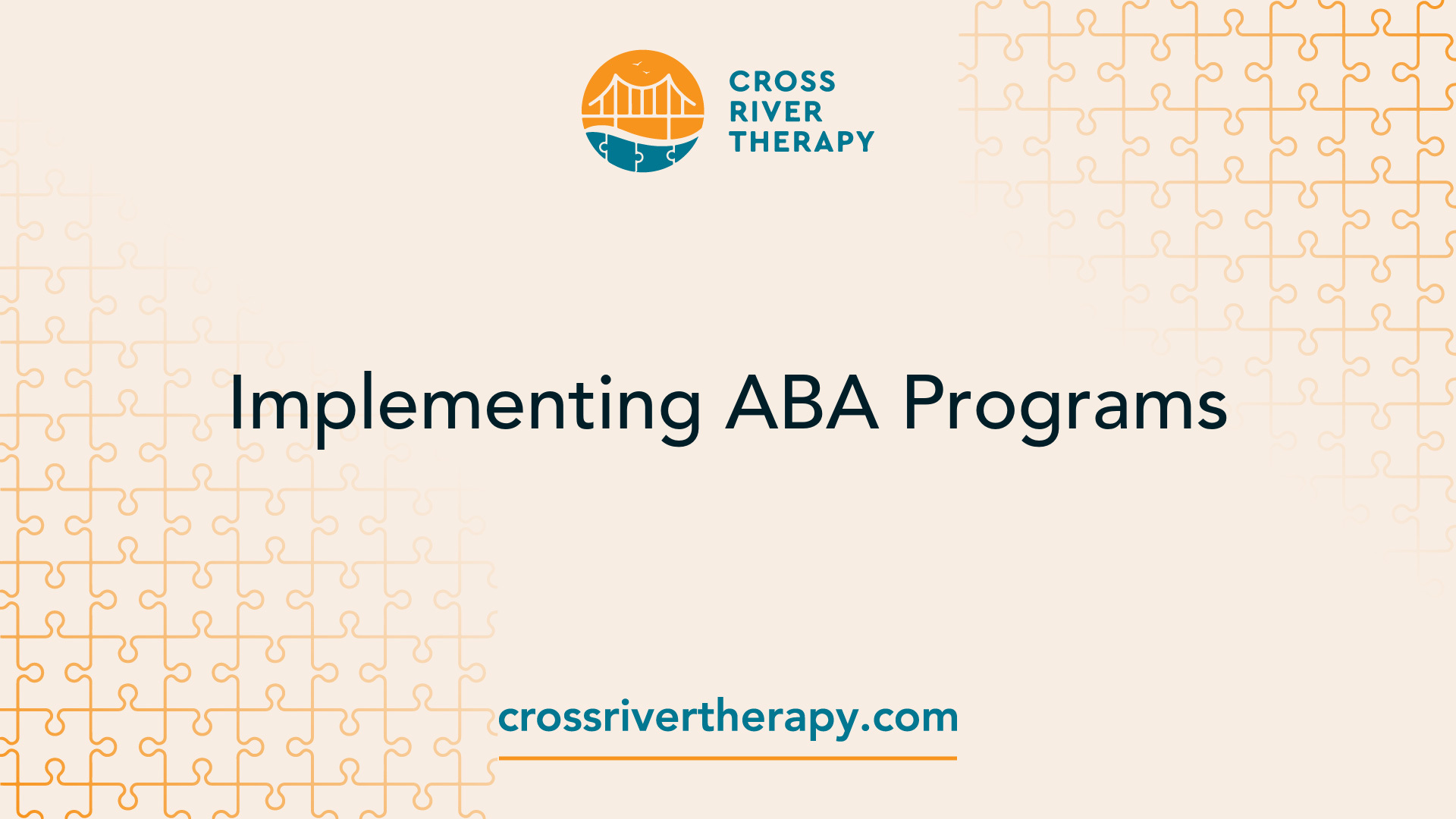ABA Therapy in Autism Behavioral Programs
Discover how ABA therapy for autism behavioral programs can boost communication and social skills for your child!

Understanding ABA Therapy
Understanding Applied Behavior Analysis (ABA) is essential for parents seeking effective behavioral programs for their children diagnosed with autism. This section offers crucial insights into the fundamentals of ABA therapy and emphasizes its status as an evidence-based practice.
Basics of ABA Therapy
ABA therapy has been utilized to assist children with autism and related developmental disorders since the 1960s. At its core, ABA focuses on understanding how behavior works, why it occurs, and how it can be changed. A personalized approach is taken, where a board-certified behavior analyst (BCBA) designs and directly oversees ABA programs tailored to each individual's skills, needs, and preferences. This customization aims to promote independence and success both in the present and in the future.
Key Components of ABA TherapyDescriptionBehavior ModificationChanging specific behaviors by identifying and altering their causes and consequences.IndividualizationCustomizing programs to fit the unique needs of each child.Goal SettingClearly defined objectives for behavior change and skill acquisition.
ABA as an Evidence-Based Practice
ABA is recognized as an evidence-based best practice treatment for autism by authorities such as the US Surgeon General and the American Psychological Association. It is supported by over 20 studies demonstrating significant improvements in outcomes for children when using ABA principles [1]. This evidence validates that ABA therapy is not a "one size fits all" solution. It is based on empirical data and tailored strategies that meet each child's individual needs and family situation.
For parents looking for ABA therapy options, various programs exist to address specific areas of concern. These include:
Understanding these fundamentals of ABA therapy can empower parents to make informed decisions about the best approach to support their child’s development.
Benefits of ABA Therapy

ABA therapy offers numerous advantages for children diagnosed with autism. This section will explore key benefits, specifically improvements in socialization and enhancing communication skills.
Improvements in Socialization
One significant benefit of ABA therapy is the enhancement of social skills in children with autism. A meta-analysis of 14 randomized controlled trials involving 555 participants highlights promising outcomes in socialization when ABA-based interventions are applied. Socialization skills are essential for building relationships and effectively interacting in various environments.
The application of customized ABA programs focused on social skills can lead to:
Skill AreasPotential ImprovementsPeer InteractionIncrease in positive interactions with peersGroup PlayImproved ability to engage in group activitiesUnderstanding Social CuesBetter recognition of nonverbal communication
Many parents have observed that intensive, long-term therapy using ABA principles has shown improvements in social functioning for their children. This emphasis on socialization can significantly enhance a child's ability to develop friendships, navigate social situations, and build self-confidence.
Enhancing Communication Skills
Effective communication is another crucial area where ABA therapy can provide substantial benefits. ABA techniques are designed to improve expressive language and overall communication skills in children with autism. Research indicates that successful interventions foster language development, enabling children to articulate their thoughts and feelings more clearly.
Through targeted ABA strategies, therapists can help children with:
Communication SkillsEnhancementsExpressive LanguageIncreased vocabulary and ability to form sentencesFunctional CommunicationMore effective ways to express needs and desiresReciprocal ConversationImproved understanding of conversational turn-taking
Children engaged in ABA therapy often show progress in their communication abilities, benefiting both parents and peers. Furthermore, combining ABA with other therapies such as speech therapy can create an even more comprehensive treatment plan tailored to individual requirements.
By focusing on socialization and communication skills, ABA therapy plays a significant role in helping children with autism develop vital competencies necessary for daily life and lasting relationships. For more information on ABA therapy for autism behavioral programs, explore additional resources available for parents seeking effective interventions.
Implementing ABA Programs

The successful execution of ABA programs for children with autism hinges on careful planning and ongoing assessment. Two crucial components of implementing these programs are creating individualized treatment plans and effective progress tracking.
Individualized Treatment Plans
Each child diagnosed with autism presents unique skills, needs, interests, and preferences. Therefore, a one-size-fits-all approach is ineffective. A board-certified behavior analyst (BCBA) is responsible for designing tailored programs that cater to the specific requirements of each learner. These individualized treatment plans focus on fostering independence and long-term success.
To illustrate how individualized treatment plans are structured, the following table provides a simplified example of different goals that may be outlined for various abilities:
Skill AreaGoalSupport StrategiesCommunicationUse words to express needsPicture exchange, modelingSocial SkillsMake eye contact during conversationRole-playing, rewardsSelf-HelpDress independentlyStep-by-step guidanceBehavioral ManagementReduce meltdowns in social settingsPositive reinforcement techniques
Progress Tracking
Progress tracking is essential in autism therapy as it enhances the effectiveness of interventions and allows for the development of personalized treatment plans. By continuously assessing the child's progress, caregivers and therapists can make informed decisions about necessary adjustments, ensuring that therapy meets individual needs.
ABA assessments play a critical role in this process, identifying specific challenges faced by individuals on the autism spectrum while capitalizing on their strengths. Graphing data trends is a common method used in ABA therapy to track progress visually. This approach allows therapists to analyze behavior and skill acquisition patterns over time, ultimately evaluating the effectiveness of treatments and interventions.
Example of Progress Tracking
Skill AreaBaseline DataCurrent DataProgressCommunication5 words per session15 words per sessionImprovedSocial Skills2 interactions8 interactionsSignificant improvementSelf-Help50% on tasks80% on tasksMajor improvement
Implementing ABA therapy involves thorough planning tailored to each child and consistent tracking of their progress. This approach not only supports the child in their developmental journey but also provides reassurance to families involved in the therapy. For more information on ABA therapy options, explore our resources on aba therapy for autism behavioral programs, aba therapy for behavioral support programs, and aba therapy for autism health services.
ABA Therapy Techniques
ABA therapy provides numerous techniques designed to foster meaningful behavioral changes in children diagnosed with autism. Understanding these methods can support parents in choosing the right strategies to enhance their child's development.
Positive Reinforcement
Positive reinforcement is a key strategy in ABA that encourages desired behaviors through rewards that are meaningful to the individual. When a child engages in positive behavior, they are immediately rewarded, reinforcing that behavior and increasing the likelihood that it will occur again. Examples of rewards can include verbal praise, small treats, or extra playtime. This technique helps children understand the connection between their actions and the positive outcomes that follow aba therapy for autism behavioral programs.
BehaviorRewardFrequencySharing toysPraiseDailyCompleting homeworkSmall treatWeeklyFollowing directionsExtra playtimeAs needed
Task Analysis
Task analysis is a critical component of ABA therapy where complex activities are broken down into smaller, manageable steps. By doing this, a child can learn each individual step before progressing to the next. This technique allows children to engage with tasks in a structured way, which can lead to successful completion without assistance over time. Common tasks that may be analyzed include brushing teeth, dressing, or completing homework. This approach can help children build confidence as they acquire new skills aba therapy for behavioral support programs.
TaskStepsTime to CompleteBrushing teeth1. Wet the toothbrush 2. Apply toothpaste 3. Brush teeth 4. Rinse mouth3 minutesGetting dressed1. Choose clothes 2. Put on shirt 3. Put on pants 4. Wear shoes5 minutes
Chaining and Shaping
Chaining and shaping are two effective methods used within ABA therapy to help children learn new skills.
TechniqueDescriptionExampleChainingTeaching steps in order for task completionHandwashing stepsShapingReinforcing gradual attempts to master a skillLearning to tie shoes
Understanding these techniques is essential for parents seeking to implement effective ABA therapy. Each method contributes to a structured approach that can produce significant improvements in a child's behavior and skill acquisition aba therapy for child therapy.
Family Involvement in ABA Therapy
Importance of Family Participation
Family involvement is a critical aspect of ABA therapy, as it helps ensure that skills and behaviors learned during sessions are reinforced in everyday settings. Parents, family members, and caregivers are encouraged to take an active role in their child's therapeutic journey. They are taught basic ABA principles and strategies to facilitate this process [6]. A collaborative approach between therapy providers, educators, and family members significantly enhances the chances of achieving successful outcomes for the child.
Involving families in ABA therapy allows for tailored programs that consider the individual's strengths, needs, and specific goals. A board-certified behavior analyst (BCBA) customizes programs based on each learner's unique situation, which often includes input from family members. This input helps in setting treatment goals that align with the values and priorities of the family.
Carrying Over Skills to Home Environment
It is essential that the skills learned in ABA therapy are carried over into the home environment. Family members play a vital role in this transfer of learning, promoting continuity and reinforcement of new behaviors. By implementing the strategies they have learned, families can support their child's progress and make meaningful changes in daily routines.
The collaboration doesn’t end with therapy sessions. Families can integrate learned skills into everyday activities, such as during mealtime, play, or while completing chores. Here’s how families can help:
ActivityABA Skill to ReinforceMealtimePracticing table mannersPlaytimeTaking turns and sharingHomeworkFollowing instructions and completing tasks
Ensuring that new skills are practiced in real-life situations helps children generalize what they have learned, enhancing their independence and confidence. For parents of children diagnosed with autism seeking more resources, links to related information include aba therapy for autism behavioral services and aba therapy for child behavioral programs.
By fostering a strong partnership between families and therapists, the effectiveness of ABA therapy is amplified, leading to improved outcomes and overall wellbeing for children with autism.
Challenges in ABA Implementation
Despite the effectiveness of ABA therapy in supporting children with autism, various challenges can hinder its successful implementation. These include low rates of full ABA dosing and factors that contribute to service discontinuation.
Low Rates of Full ABA Dosing
Research shows that while approximately 66% of children referred for ABA services stayed in the program for 12 months, less than half, only 46%, remained engaged for 24 months. Alarmingly, only 28% of the children who received ABA for a full 24 months actually received a full ABA dose [7]. Full dosing is crucial for achieving the desired outcomes in behavioral change and skill development.
Factors contributing to these low rates may include the complexity of treatment planning, the commitment required from families, and the availability of qualified professionals. It's vital for families to understand that sustained engagement directly correlates with improved results in ABA therapy.
Duration of ABA ServicesPercentage of Children Remaining12 months66%24 months46%Full ABA Dose (24 months)28%
Service Discontinuation Factors
Service discontinuation is another significant challenge faced in ABA therapy. Children with a history of special education tend to remain in ABA longer. In contrast, those from single-parent households are more likely to discontinue services. Other reasons unrelated to clinical progress can also impact a family's decision to stop services, such as:
Addressing these discontinuation factors is essential for optimizing ABA therapy for children with autism. Increased awareness and support can help families navigate these challenges, ensuring that their children receive the much-needed assistance from programs like aba therapy for autism behavioral services and aba therapy for behavioral support programs.
References
[2]:
[3]:
[4]:
[5]:
[6]:
[7]:



